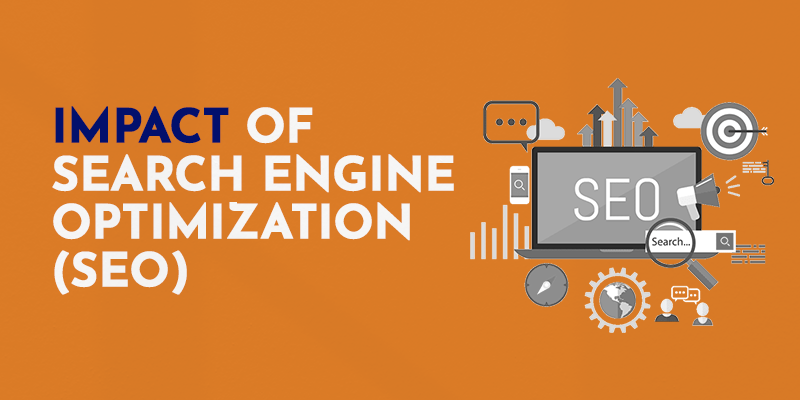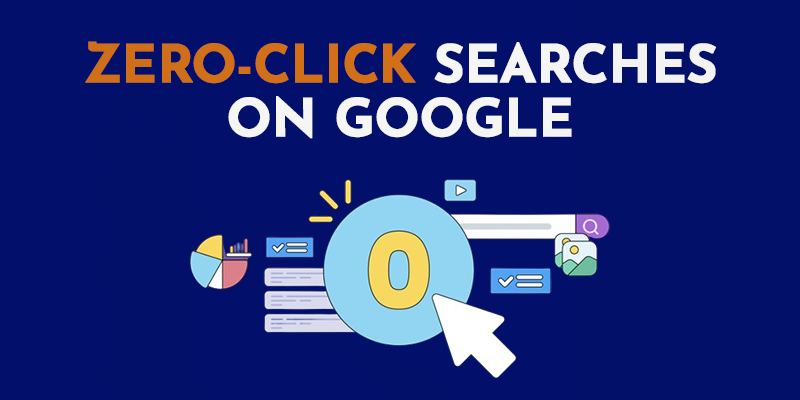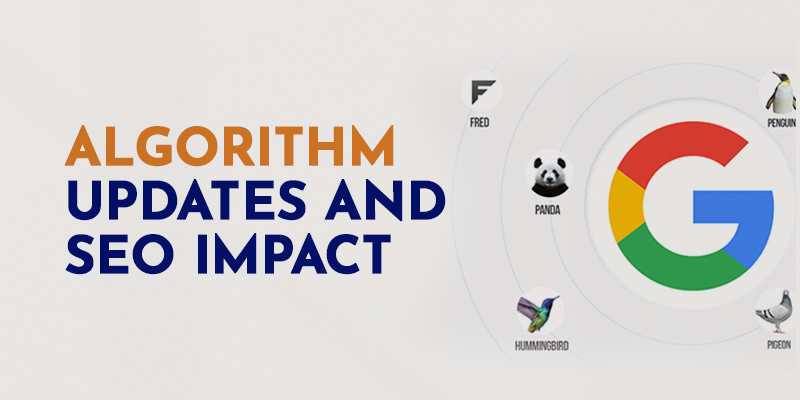The Future of Search: 10 Google Search Statistics for 2024
Every day, millions of fingers type out queries into Google, seeking answers that are just a click away. The digital landscape is evolving as we hurtle into 2024, with Google Search at the heart of this transformation. From voice-activated virtual assistants to fine-tuning SEO strategies, the way we search is changing dramatically.
In this era of technological marvels, it’s crucial to stay ahead of the curve by understanding the trends and statistics that will define the future of search. To guide you through this digital revolution, we’ve compiled a list of 10 Google Search statistics that will help you grasp the magnitude of upcoming changes, from generative algorithms and AI content to the impact of zero-click searches and visual technology.
Join us as we dive into the depths of data and analysis, exploring how these ten facets of Google Search are shaping our online experiences and crafting the future of digital interaction and business strategy.
Statistic 1: Generative Experience in Search

Recent data suggests that Google Search increasingly leverages generative algorithms to enhance user experience. It is estimated that by 2024, over 60% of search queries will interact with AI-generated content at some point in their search journey. This shift signifies how generative experience is becoming a key aspect of modern search engines.
These AI-driven generative experiences give users more personalized and accurate results by understanding the context and intent behind queries with ever-growing precision. As these machine learning models become more sophisticated, they can generate comprehensive answers, summaries, and even creative content that aligns closely with users’ search intent.
Statistic 2: Rise of Voice Search

Voice search has become popular as technology becomes more interwoven with everyday life. Predictions for 2024 point to voice search accounting for nearly 50% of all online searches. This surge comes on the back of the improved accuracy of voice recognition software and an increase in smart speaker ownership.
The convenience of simply speaking to a device and instantly receiving an answer has appealed greatly to users of all ages. With the proliferation of voice-activated assistants on smartphones, wearables, and home devices, users quickly adopt voice search as part of their daily routines. This trend has fostered changes in search queries, as they now reflect more natural language — a shift from the more clipped and keyword-focused queries of traditional text-based search.
Voice Search Trends and Adoption Rates
The expansion of voice search is backed by a steep adoption curve, which is reflected by the following rates:
Smart Speaker Penetration: Over 55% of households are estimated to be in by 2024.
Mobile Voice Searches: This is predicted to grow by 35% over the current rate, furthering voice search integration into mobile devices.
Voice-Powered Shopping: This is expected to increase by 30% as users start to feel more comfortable making purchases through voice commands.
These trends represent a powerful signal to SEO professionals and content creators that voice search optimization should be a significant component of future SEO strategies. Adapting content to cater to voice search involves embracing natural language, focusing on long-tail keywords, and providing direct answers to users’ questions. As voice search technology advances, the digital strategy landscape must adapt to keep up with the changing ways users retrieve information from search engines.
Statistic 3: Impact of Search Engine Optimization (SEO)

In the dynamic domain of search, the importance of Search Engine Optimization (SEO) continues to scale new heights. As we look toward 2024, statistics reveal that fully optimized websites are expected to garner up to 55% more organic traffic than non-optimized sites. This staggering increment highlights the profound effect of SEO strategies on enhancing a website’s visibility and reach.
The interplay between search algorithms and SEO is ongoing, with search engines like Google constantly refining their algorithms to deliver the most relevant and useful search results. In response, SEO professionals have learned to be agile, continually adapting their digital strategies to navigate algorithm updates and maintain competitive organic rankings.
Evolving SEO Strategies for Better Organic Rankings
With the landscape of search engines ever-evolving, so must the SEO strategies businesses and content creators employ. Here are some key developments that are shaping the field:
Content Relevance and Quality: Google continues to refine what it considers ‘helpful content,’ pushing SEO specialists to prioritize creating high-quality and user-focused content over keyword stuffing and other erstwhile SEO tricks.
Mobile-First Indexing: Given that most searches now occur on mobile devices, search engines prioritize mobile-friendly sites. Hence, strategies for 2024 will need to emphasize mobile optimization to avoid losing ground in search results.
Voice Search Optimization: As voice searches become more prevalent, content must be optimized for conversational language and long-tail keywords to cater to this growing trend.
Visual Search Flourishing: With advances in AI, visual search capabilities have surged. SEO strategies will need to consider optimizing images—from using alt-text to ensuring high image quality—to capitalize on this form of search.
User Experience (UX) Factor: Speed and usability are expected to continue as ranking signals, with SEO strategies incorporating technical elements that improve site performance and user satisfaction.
Statistic 4: AI-Generated Content

The search landscape is being reshaped by the emergence of AI-generated content. In 2024, statistics indicate that approximately 30% of content found on the first page of Google results originates from AI tools. This reflects a compelling shift from traditional content creation methodologies to machine learning-powered solutions that can produce content at scale.
AI-generated content is not only populating the web at an astonishing rate but is also raising the bar for content types that engage users. Search engines are adapting to this trend by updating their algorithms to assess the quality and value of AI-created text, striving to ensure that it adheres to the same standards expected of human content creators.
Statistic 5: Zero-Click Searches on Google

The realm of zero-click searches has been expanding, with 2024 data indicating that a staggering 65% of Google searches end without a click to other web content. This highlights a key transition wherein searchers find the answers they need directly within the search engine results pages (SERPs), thanks to features like featured snippets, knowledge panels, and local packs.
Zero-click searches are particularly prevalent for inquiries that require concise answers such as definitions, quick facts, mathematical solutions, and local business information.
Understanding the Growing Trend of Zero-Click Searches
Delving deeper into the increasing prevalence of zero-click searches reveals a generative experience shaped by users’ desire for immediate satisfaction. Search engines have become increasingly adept at delivering instant, AI-generated answers directly in the SERPs. The ease of acquiring information without additional navigation is a considerable convenience that resonates with users’ expectations for quick and efficient search experiences.
However, for businesses and content marketers, the surge in zero-click searches presents a challenge, compelling them to refine their digital strategy. To remain relevant, they must optimize their online presence to align with the structured data and rich snippets that Google favors.
Statistic 6: Visual Search Technology

Visual search technology has evolved to become a game-changer in the realm of digital strategy, marrying the ease of capturing an image with the ability to find relevant information instantaneously. In 2024, analytics point to a substantial 40% of online searches being conducted through visual inputs. This eye-opening statistic underscores a shift in user behavior toward more dynamic and interactive search experiences.
Brands are integrating visual search into their digital strategy and SEO practices in several ways:
- Optimizing image alt-text for search engine crawlers.
- Implementing high-quality, descriptive images on websites.
- Encouraging user-generated content that aligns with visual search queries.
- Structuring data to enable precise product identification and comparison.
The rise of visual search indicates the broader shift towards AI-generated content and interactive search experiences, which rapidly define the future of search. With a considerable fraction of users now turning to visual stimuli to satisfy their search needs, adapting to these kinds of technological advancements is essential for any forward-thinking search strategy.
Statistic 7: Algorithm Updates and SEO Impact

Google’s algorithm is a constantly evolving landscape that frequently shifts the terrain of search engine optimization (SEO). In 2025, it was reported that Google makes thousands of changes to its search algorithms annually, with several of these being significant updates that can dramatically impact search results and, consequently, a website’s visibility.
As we navigate through the year, it’s critical to consider how these updates shape SEO strategies. In 2024, statistics have revealed that 60% of content creators and SEO professionals have had to adjust their digital strategies at least once every quarter in response to Google’s algorithm changes. Moreover, 80% have reported seeing fluctuations in their organic search traffic following major updates.
- SEO professionals abide by certain best practices to remain competitive amid these changes:
- Monitoring industry news for the latest algorithm updates.
- Conducting regular audits to assess the impact on website rankings and traffic.
Adapting SEO strategies to align with the latest guidelines, such as focusing on helpful content and optimizing for user intent.
Staying ahead in the SEO game is tantamount to keeping a vigilant eye on Google’s algorithmic shifts. SEO practitioners and business owners alike acknowledge that adapting quickly to these adjustments is integral to any robust digital strategy.
Statistic 8: User-Generated Content in Search
User-generated content (UGC) has become a formidable force in SEO and digital marketing strategies. In 2024, Google Search statistics underscored the growing impact of UGC with a revelation that websites that actively incorporate user-generated content saw a 40% increase in organic searches compared to those that did not. This surge is a testament to users’ value of authenticity and peer recommendations.
Incorporating UPG into search strategies has demonstrated benefits in creating a more engaging and trustworthy online environment. Notably, 55% of search queries now prefer pages with user reviews, comments, or contributions over conventional content. Consequently, leveraging UGC can be an exceptionally effective search strategy. To make the most of UGC, businesses and SEO professionals are:
- Encouraging users to leave reviews and engage in Q&A platforms.
- Moderating and responding to comments and discussions to maintain a high level of user interaction.
- Incentivizing user participation to boost the volume and quality of user contributions
- Integrating UGC directly into webpages, including testimonials and community feedback.
By fostering a platform for users to voice their opinions, experiences, and content, search engines like Google respond by prioritizing these dynamic, content-rich pages.
Statistic 9: Future of Search Engines

The future of search engines is being reshaped by groundbreaking innovations and emerging trends that promise to redefine user experience and search capabilities. In 2024, Google’s continued evolution of its search algorithm and the increased integration of AI have led to several notable statistics that give us a snapshot of the trajectory of search engines.
Visual search capability is also becoming an indispensable tool, with 25% of searches utilizing image recognition technology to find products, compare prices, or gain additional information by simply snapping a photo. The future of search thus seems to be steering toward a more intuitive, AI-driven, and user-centric paradigm. These statistics highlight the growing need for SEO professionals to develop SEO strategies that are responsive to these technological advancements and evolving user behaviors.
Statistic 10: Business Owners and Search Strategy

As the digital landscape continues its relentless evolution, business owners are challenged to adapt their search strategies to maintain visibility and relevance. In 2024, statistics reveal that 55% of business owners recognize search engine optimization (SEO) as a vital factor for business growth and invest accordingly in SEO strategies.
Preparing for newer search modalities such as voice and visual search is a priority for 40% of business owners as these technologies become more entrenched in user habits. Moreover, understanding and adapting to the wide-reaching influence of AI-generated content and answers is now on the radar for 35% of businesses, indicating a growing awareness of the need for synergy with AI advancements in search.
Final Thoughts
To navigate the shifting sands of search, businesses must adopt a multifaceted and dynamic approach to their digital presence. Investing in AI can enhance search capabilities and content relevance. Tools that leverage AI for content strategy and SEO can keep businesses ahead of the curve. Rapid loading times, mobile optimization, and engaging multimedia elements can help improve rankings and user satisfaction. Google’s emphasis on ‘helpful content’ means that business owners should focus on providing value through user-centric content that addresses user intent.
By integrating these strategic elements, businesses can ensure their search strategies remain robust and effective in the fast-paced world of search engine evolution, thereby maintaining their competitive edge in the digital marketplace.
